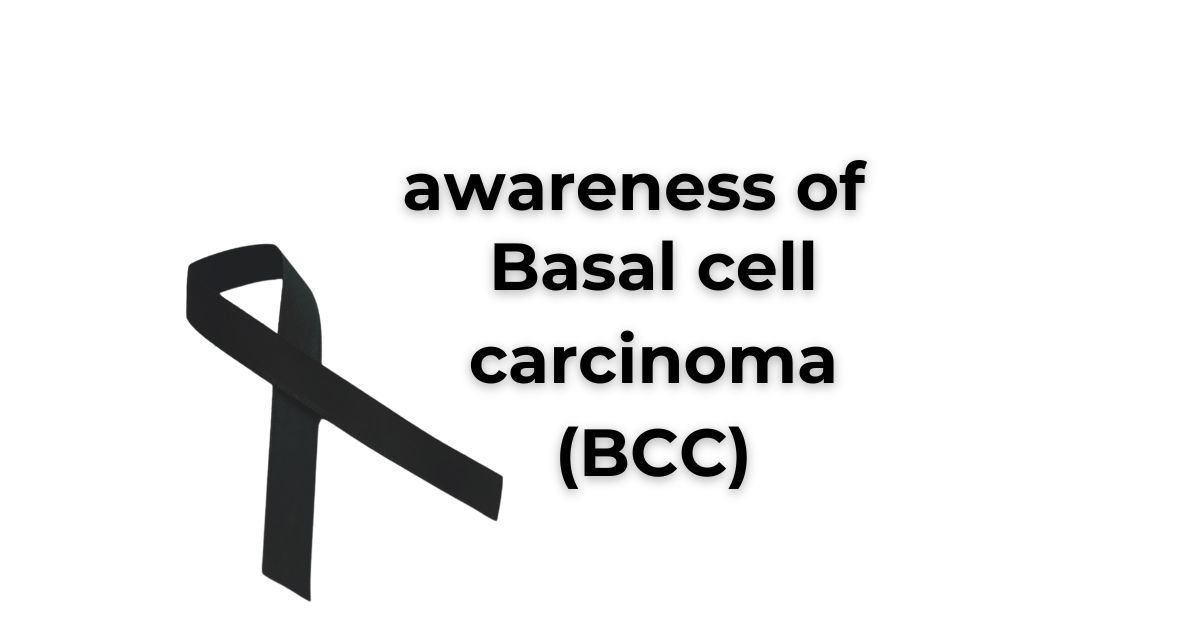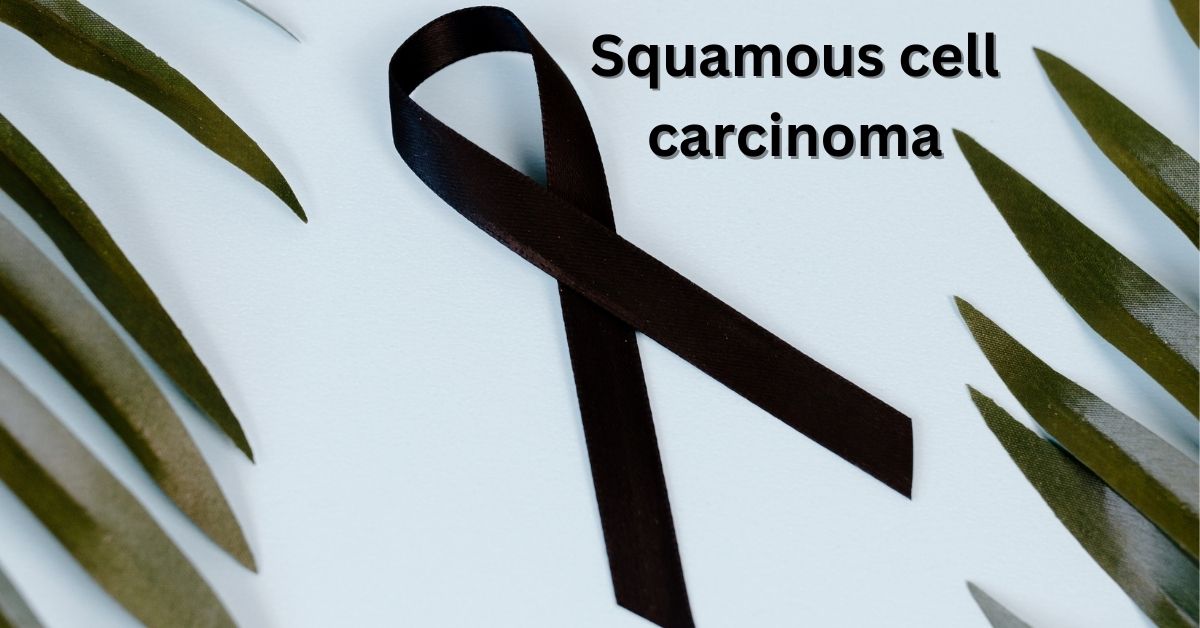The location of cancer determines the type of skin cancer a person gets. Moreover, Skin cancer affects nearly one in every five people at some point. Almost all skin cancers are curable if detected and treated early. Excision, cryotherapy, Mohs surgery, chemotherapy, and radiation are all options for treatment. Examine your skin for changes in the size, shape, or color of skin growths. Visit your dermatologist once a year for a professional skin examination. Well, Here you can see how the most common types of skin cancer can look and who is more likely to develop each type.
- Basal cell skin cancer occurs when cancer begins in skin cells called basal cells.
- Melanoma develops when the cells that give our skin its color become cancerous.
- Squamous cell carcinoma (SCC):
The most common types of skin cancer
There are several types of skin cancer, but the three most common types are:
1. Basal cell carcinoma (BCC):

Cell carcinoma (BCC) is the most common type of skin cancer, accounting for about 80% of all cases. It usually develops in areas of skin that have been exposed to the sun, such as the head, face, neck, and ears, although it can also occur on other parts of the body.
Typically appears
BCC typically appears as a small, shiny bump or a red, scaly patch on the skin. It may bleed or form a crust and be mistaken for a pimple or a harmless sore. Over time, the bump may enlarge, developing into an open sore that doesn’t heal or a raised, waxy growth with visible blood vessels.
- Although BCC rarely spreads to other body parts, it can cause significant damage to nearby tissues if left untreated.
- The most common treatment for BCC is surgical removal, which can usually be done on an outpatient basis under local anesthesia.
- Moreover, Other treatments, such as radiation therapy, topical medications, and cryotherapy, may be used in certain cases.
- The best way to prevent BCC is to protect your skin from the sun’s harmful rays by wearing protective clothing, seeking shade, and using sunscreen.
2. Squamous cell carcinoma (SCC):
Squamous cell carcinoma (SCC) is the second most common type of skin cancer, accounting for about 16% of all cases. It usually develops in areas of skin that have been exposed to the sun, such as the face, ears, lips, and backs of the hands, although it can also occur on other parts of the body.

Typically appears
SCC typically appears as a red, scaly patch or a raised, wart-like growth on the skin. It may be tender to the touch and bleed or form a crust. Over time, the growth may enlarge, developing into a sore that doesn’t heal or a raised, scaly lump with a hard, crusty surface.
- Although SCC is more likely than basal cell carcinoma to spread to other body parts, the risk of metastasis is still relatively low, especially if the cancer is caught early.
- The most common treatment for SCC is surgical removal, which can usually be done on an outpatient basis under local anesthesia.
- Other treatments, such as radiation therapy, topical medications, and cryotherapy, may be used in certain cases.
- The best way to prevent SCC is to protect your skin from the sun’s harmful rays by wearing protective clothing, seeking shade, and using sunscreen.
3. Melanoma:
Melanoma is the most dangerous type of skin cancer, accounting for about 4% of all skin cancer cases. occurs when the pigment-producing cells in the skin, called melanocytes, become cancerous and grow uncontrollably.
It can develop anywhere on the body, but it most commonly occurs in areas exposed to the sun, such as the back, legs, arms, and face. It can also develop in areas that don’t receive much sun exposure, such as the palms of the hands, the soles of the feet, and the nails.

Melanoma typically appears
Unusual mole or a change in the appearance of an existing mole. The ABCDE rule can be used as a guide for identifying potential signs of melanoma:
- A: Asymmetry – one half of the mole doesn’t match the other half.
- B: Border – the mole’s edges need to be more regular or better defined.
- C: Color – the mole is uneven, with shades of black, brown, or tan, and may include white, grey, red, or blue areas.
- D: Diameter – the mole is larger than 6 millimeters (about the size of a pencil eraser).
- E: Evolving – the mole changes in size, shape, color, or elevation.
If you notice any of these signs, you must see a dermatologist as soon as possible. If melanoma is caught early, it can usually be treated with surgical removal.
However, if it’s not caught early, it can spread to other body parts and become life-threatening. Other treatments for advanced melanoma may include radiation therapy, immunotherapy, targeted therapy, or chemotherapy.
Protecting your skin from the sun’s harmful rays is the best way to prevent melanoma by wearing protective clothing, seeking shade, and using sunscreen.
What are some of the less common types of skin cancer?
The following are some of the less common skin cancers:
Kaposi sarcoma is a type of cancer.
Kaposi sarcoma is rare cancer that most commonly affects people with weakened immune systems, those with human immunodeficiency virus (HIV)/AIDS, and those taking immunosuppressive medications after an organ or bone marrow transplant.
The followings are the signs and symptoms of Kaposi sarcoma:
- Blue, black, pink, red, or purple blotches or patches on your arms, legs, and face that are flat or bumpy. Lesions in your mouth, nose, and throat are also possible.
Merkel cell cancer
Merkel cell carcinoma is rare cancer that begins at the base of the epidermis, your skin’s top layer. This cancer begins in Merkel cells, which have characteristics of nerve cells and hormone-producing cells and are located very close to nerve endings in your skin. Merkel cell skin cancer is more likely than squamous or basal cell skin cancer to spread to other body parts.
Merkel cell carcinoma symptoms include:
- On sun-exposed skin, a small reddish or purplish bump or lump.
- Lumps grow quickly and can sometimes form ulcers or sores.
Sebaceous gland cancer
Sebaceous gland carcinoma is a rare and aggressive cancer that typically appears on the upper eyelid. Because there are so many sebaceous glands around your eyes, this cancer is more likely to develop there.
The followings are the signs and symptoms of sebaceous gland carcinoma:
- A round, firm, painless bump or lump on or slightly inside your upper or lower eyelid.
Protuberans Dermatofibrosarcoma (DFSP)
DFSP is a rare type of skin cancer that starts in the dermis or the middle layer of your skin. It spreads slowly, grows slowly, and has a high survival rate.
The followings are the signs and symptoms of DFSP:
- A scar-like bump or rough raised plaque on your skin that is purple, pink, red, or brown.
- In newborns and children, the appearance of a birthmark.
Conclusion
It is critical to protect your skin from the sun’s harmful rays and to inspect it regularly for any changes or abnormalities. Skin cancer treatment requires early detection and treatment. It is critical to consult a healthcare professional if you have any concerns about your skin or notice any changes.















































